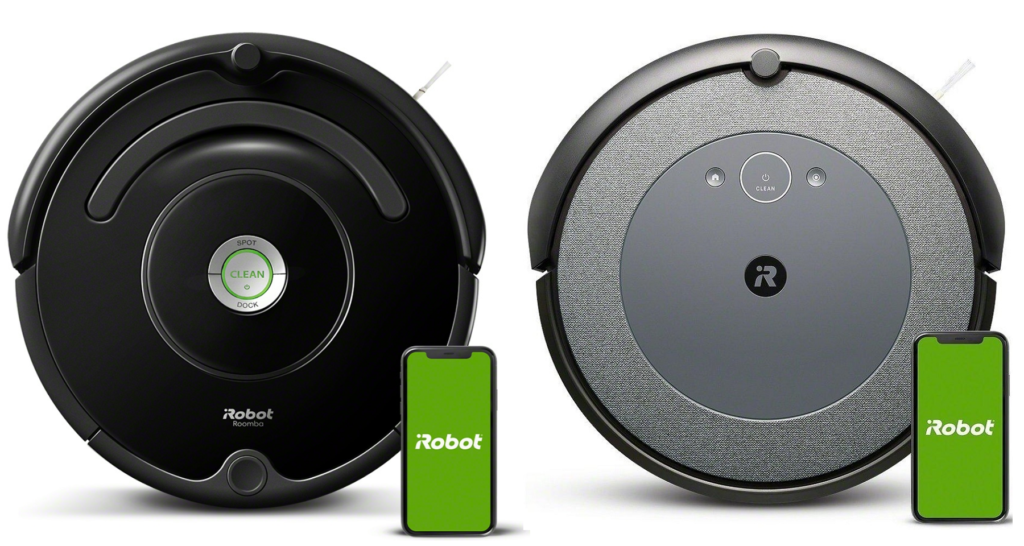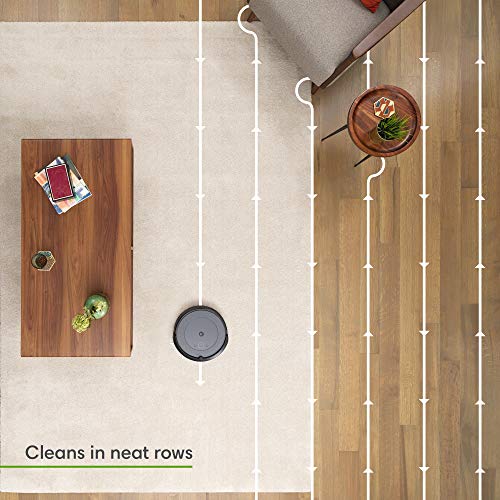The Roomba 675 and i3 are two budget friendly options in the iRobot vacuum lineup. Both are high quality robot vacuums that will perform well at cleaning your home, but they do have some significant differences in their features and capabilities. Before you make your decision on which one to buy, it is important to know about these differences so you can pick the best fit for what you need in a vacuum. Let’s take a look at those differences.
Contents
- 1 What are the differences between Roomba 675 and i3?
- 2 Difference 1 – Roomba i3 has smart navigation but Roomba 675 does not.
- 3 Difference 2 – The i3 has recharge and resume whereas the 675 does not.
- 4 Difference 3 – the i3 has dual anti-tangle brushrolls, the 675 has 1 +1 bristle brushroll
- 5 What about Roomba i3+ vs 675?
- 6 Similarity 1 – Both the i3 and 675 have auto-return, dirt-detect, and drop sensors.
- 7 Similarity 2 – Both are wifi enabled
- 8 Conclusion
What are the differences between Roomba 675 and i3?
The Roomba i3 uses smart navigation, has recharge-and-resume, and uses two anti-tangle brushrolls. The Roomba 675 has random navigation, cannot recharge and resume, and has one regular and one anti-tangle brushroll. You get more bang for your buck with the i3.
The Roomba 675 is considered basic when it comes to iRobot’s lineup. It does not come with the smart mapping system that higher-end models like the i3 have. This means that Roomba 675 roams around randomly until it covers your entire floor.
On the other hand, the Roomba i3 vacuums in satisfying straight lines. It is able to tell where it is in your home by using its floor tracking sensor. Smart navigation is much more efficient and means that the i3 will be able to get your floors clean more quickly than the 675.
Difference 2 – The i3 has recharge and resume whereas the 675 does not.
“Recharge and resume” means that the robot is able to continue cleaning where it left off if it runs out of battery mid-clean. This is quite an important feature if you have a large home.
Roombas without this feature (e.g. the 675) will just clean as much as it can and return to its dock for charging. This means you’re relying on chance for the 675 to clean a certain part of your home. If it doesn’t randomly roam into that area by the time its batteries are running low, that area won’t be cleaned (in this session).
The i3, on the other hand, has recharge and resume, and will make sure your entire floor is cleaned even if it means having to take a charging break in the middle.
Difference 3 – the i3 has dual anti-tangle brushrolls, the 675 has 1 +1 bristle brushroll
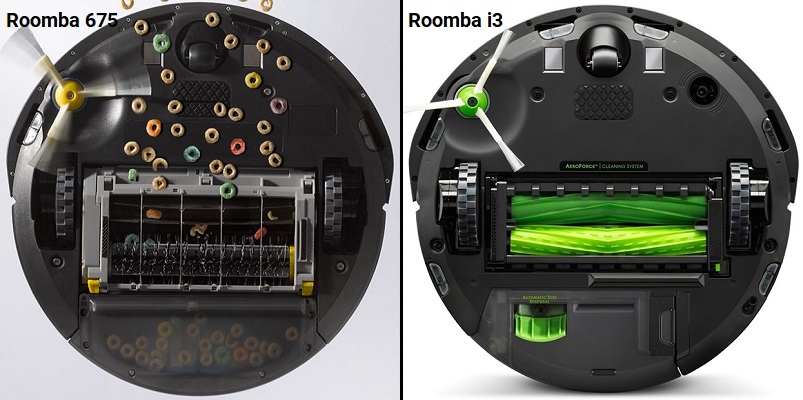
The Roomba 675 and i3 both feature rolling brushes that are designed to pick up stubborn pet hair. The 675 has one regular brushroll and one anti-tangle roller, whereas the i3 has dual anti-tangle rollers.
The anti-tangle rollers are quite the improvement over the bristled ones, and are specially designed to reduce the amount of hair that gets tangled in the brushes and stuck on your floor. It may not seem like much but this means much, much less work when it comes to maintenance.
See Roomba 675 on AmazonWhat about Roomba i3+ vs 675?
The Roomba i3 has an auto-emptying version called the Roomba i3+, whereas the 675 does not have an auto-emptying version.
The i3 can be upgraded to the i3+ by purchasing the self-emptying docking station. The docking station takes the work out of emptying the dustbin. When it’s done cleaning, the i3+ will return and empty its dustbin into the disposal bag of the home base. This is great if you hate emptying the dustbin and don’t mind the added cost of the home base.
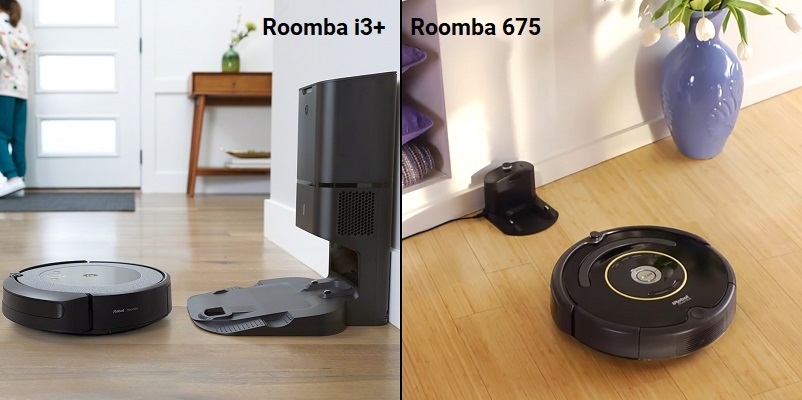
The 675 doesn’t have any self-emptying abilities and is not compatible with the advanced home base. However, it does come with the standard, small charging dock that is included with all Roombas.
Back to the i3 and 675.
Similarity 1 – Both the i3 and 675 have auto-return, dirt-detect, and drop sensors.
Both Roombas also have auto-return features that make it easy to get them back to their docking stations when they are running low on power. As discussed above, only the Roomba i3 has recharge and resume. After docking, the 675 will have to wait until its next scheduled cleaning to clean. Or you can manually make it clean the whole house again.
Dirt-detect is another feature common to all Roombas. It just means the Roomba will know spend extra time cleaning a spot that is extra dirty.
Both the i3 and 675 have sensors that will deter them from falling off your stairs, making them safe to use on the upper levels of a home.
Similarity 2 – Both are wifi enabled
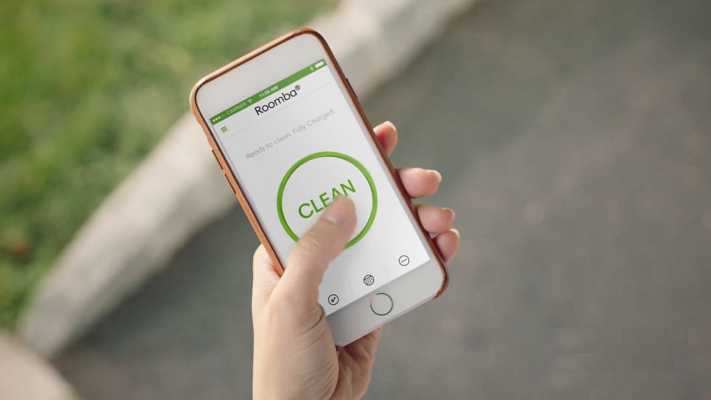
They are both wifi enabled and can be controlled by the iRobot home app on your smartphone or tablet. This allows you to start, stop, pause, and schedule cleanings remotely – even if you aren’t at home.
See Roomba i3 on AmazonConclusion
The Roomba 675 is an ok choice for those whose home layout isn’t too complex, but it doesn’t have the smart navigation and recharge and resume feature of the i3 (and i3+). For most people, I think those two features justify the higher cost of the Roomba i3. It makes a big difference when it comes to getting a good, efficient clean.
